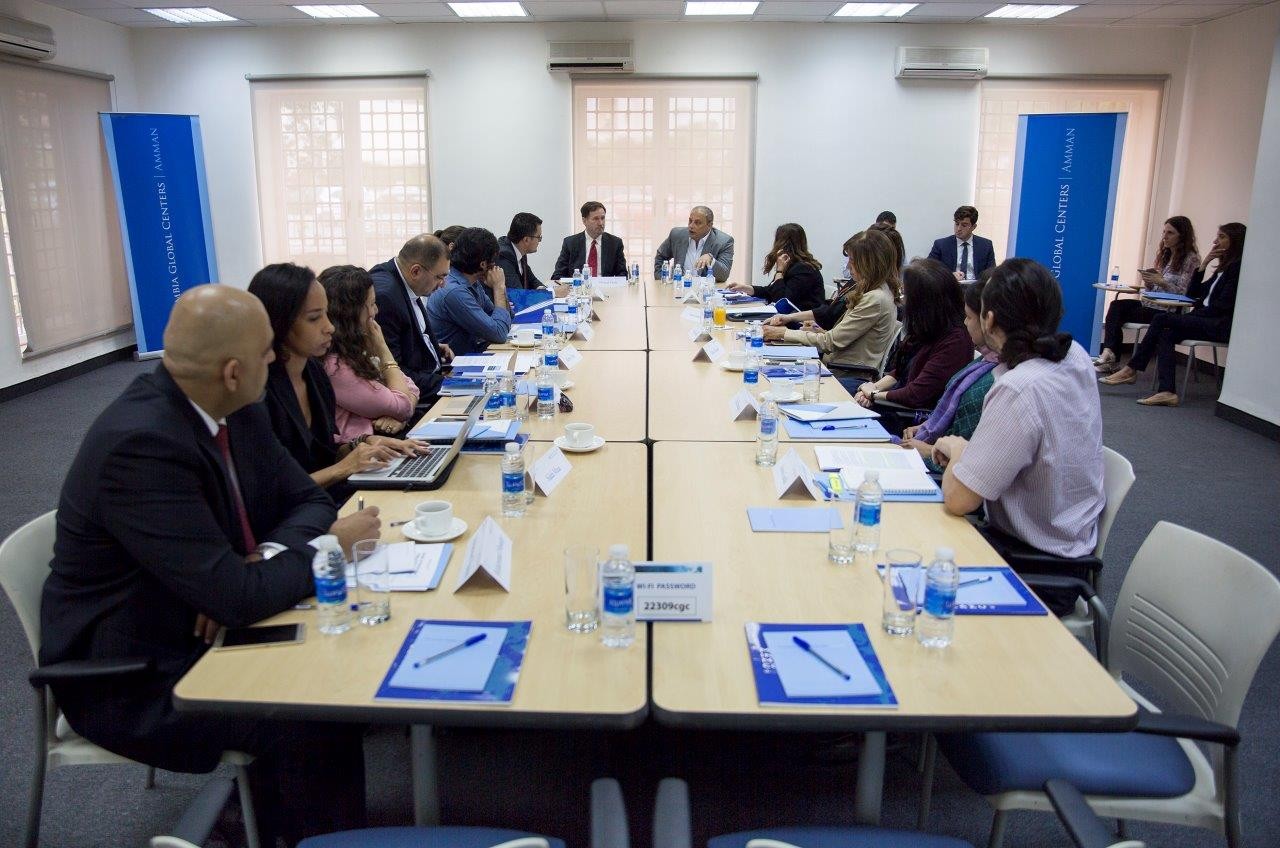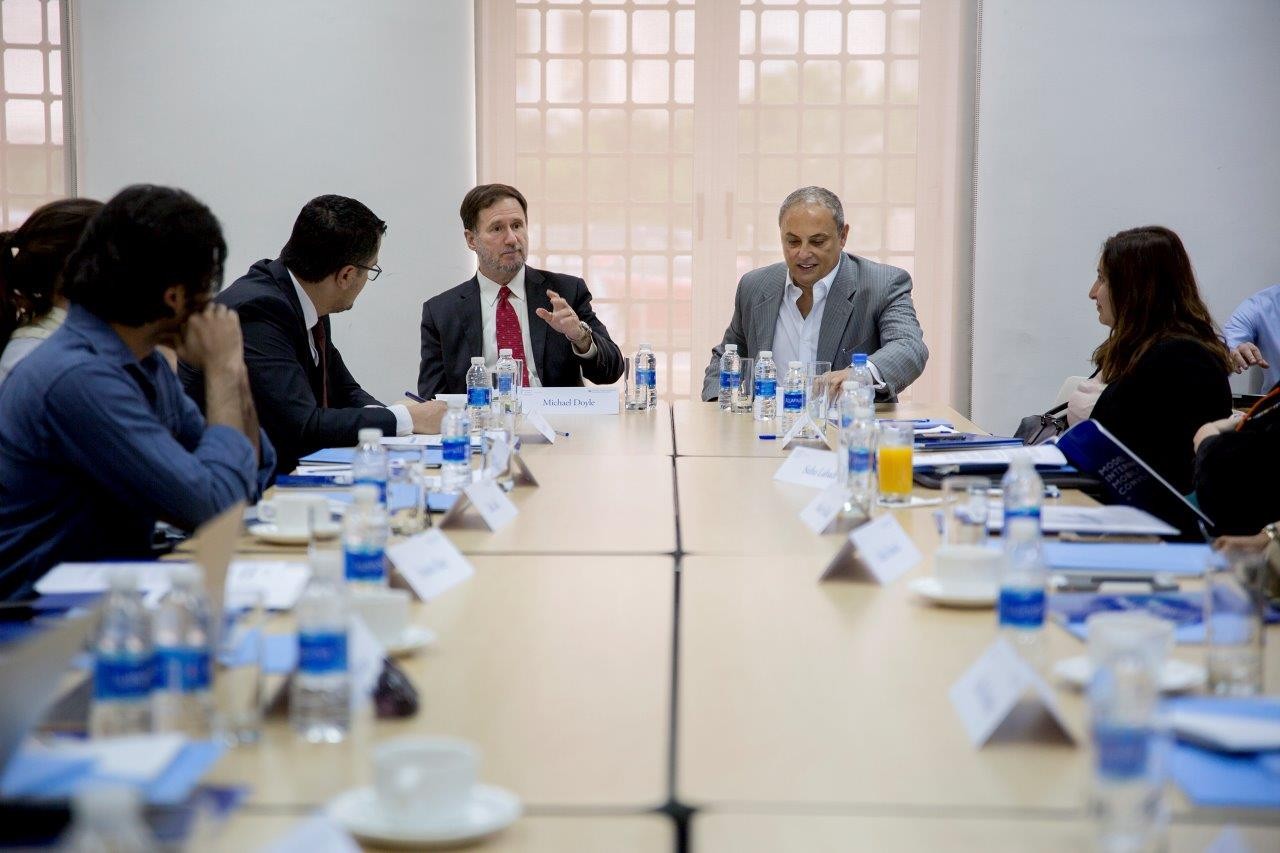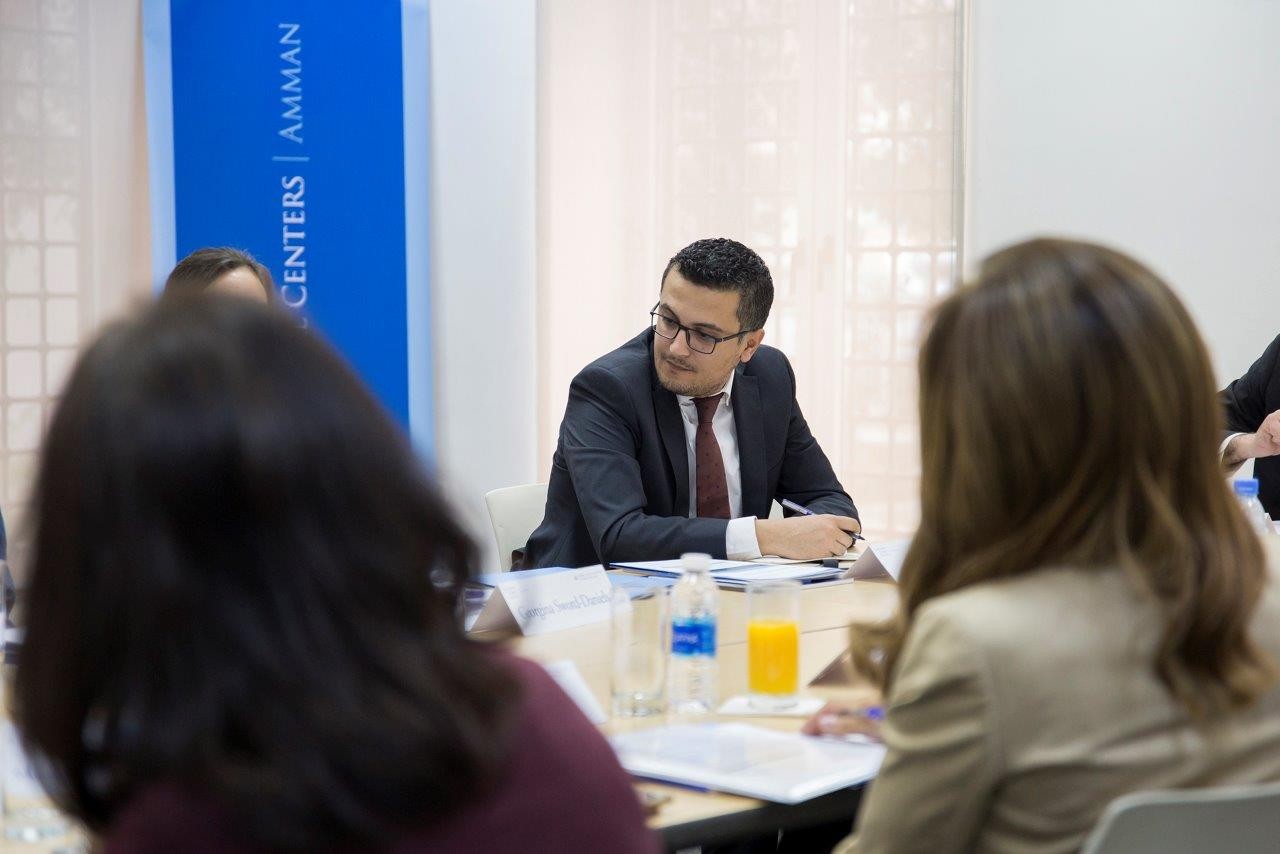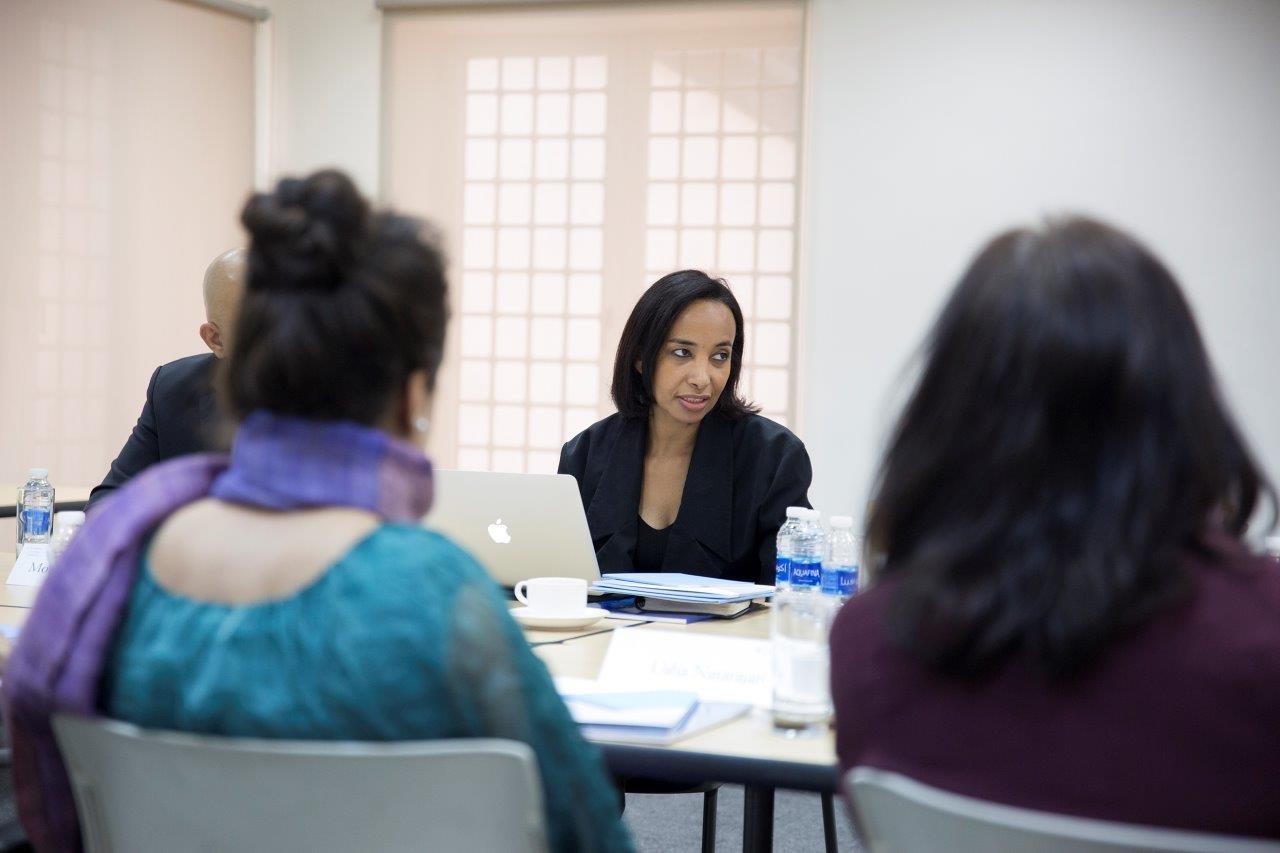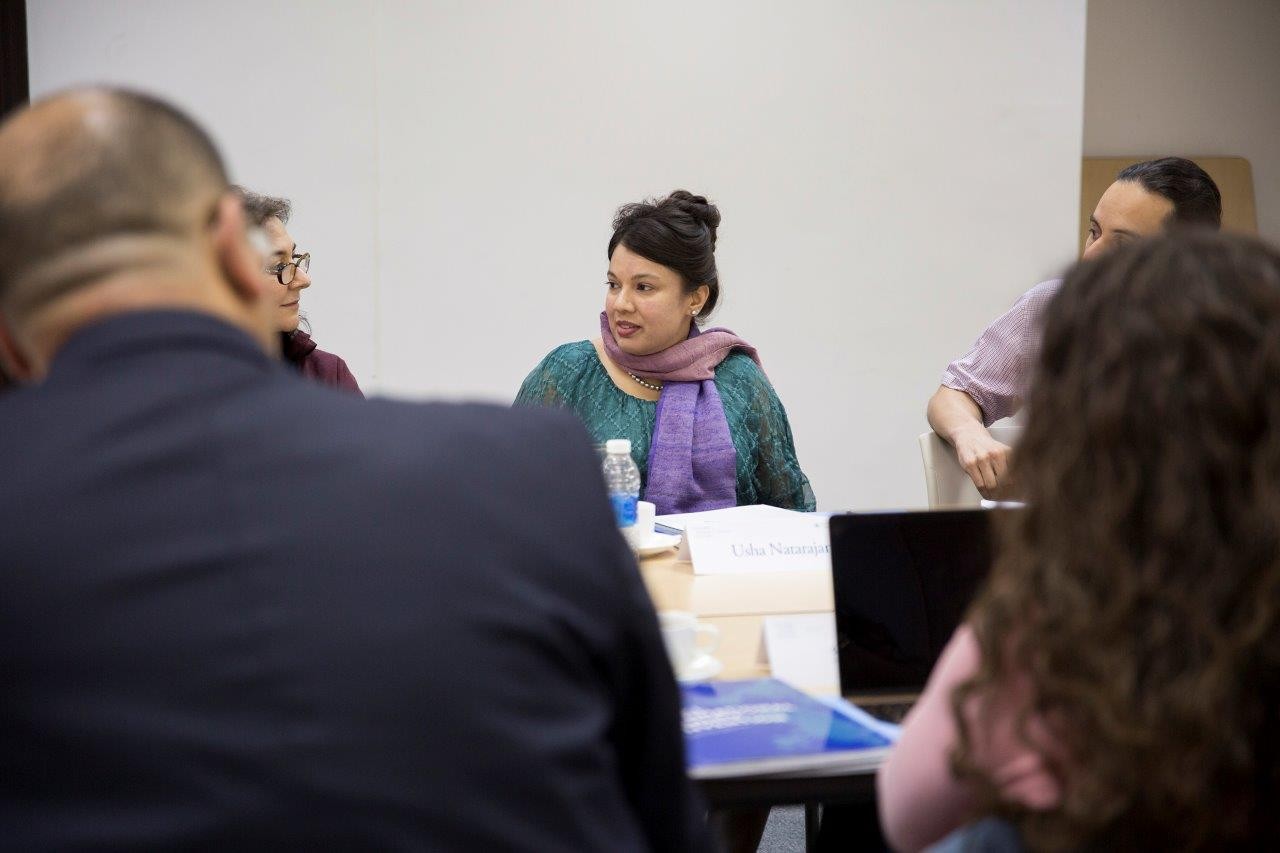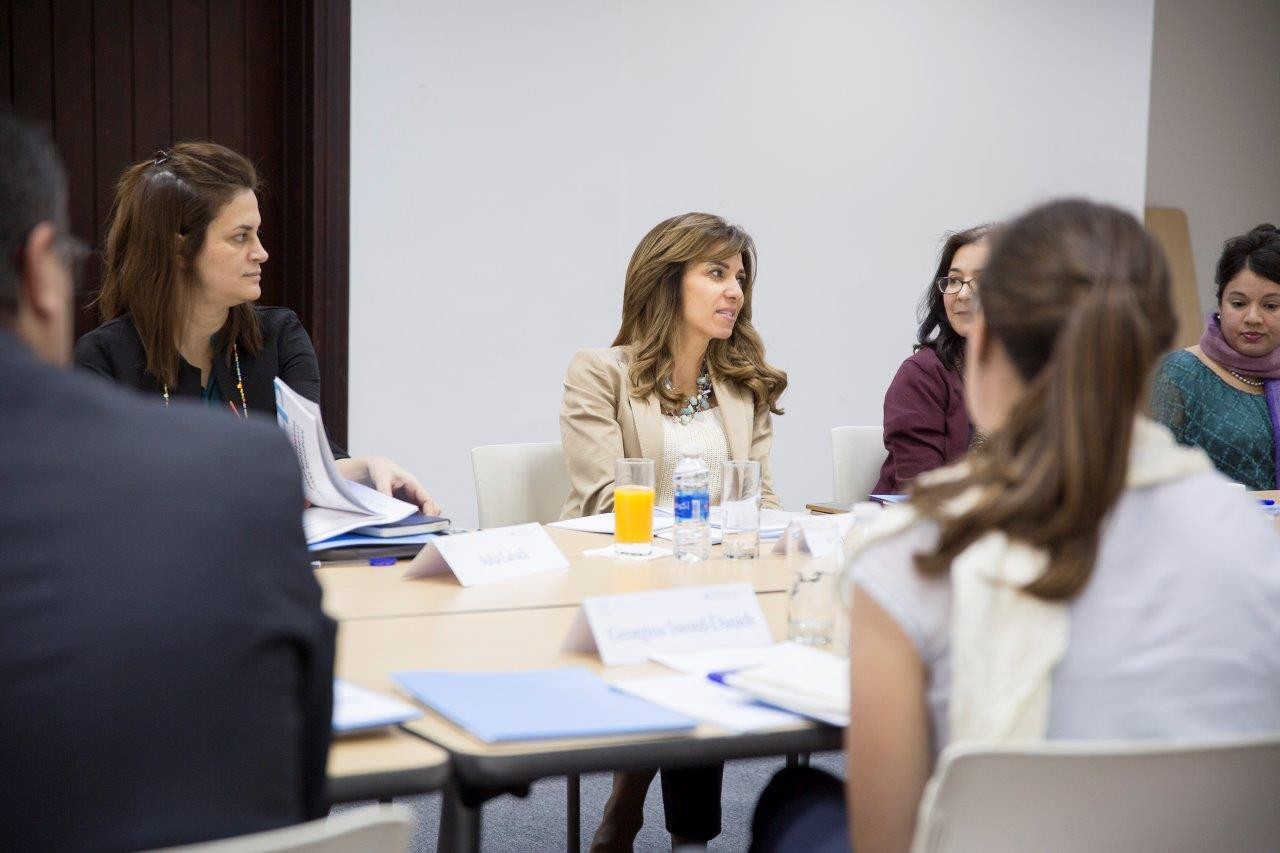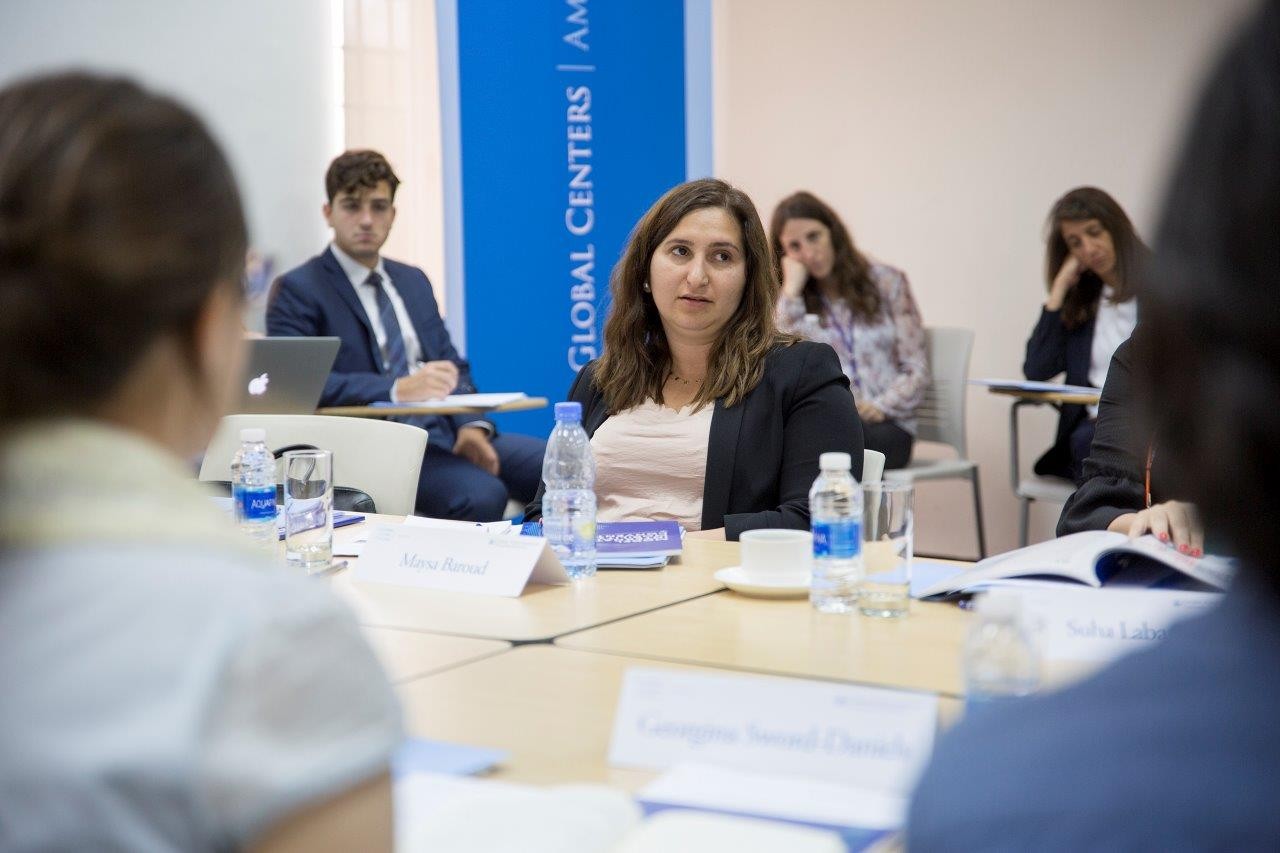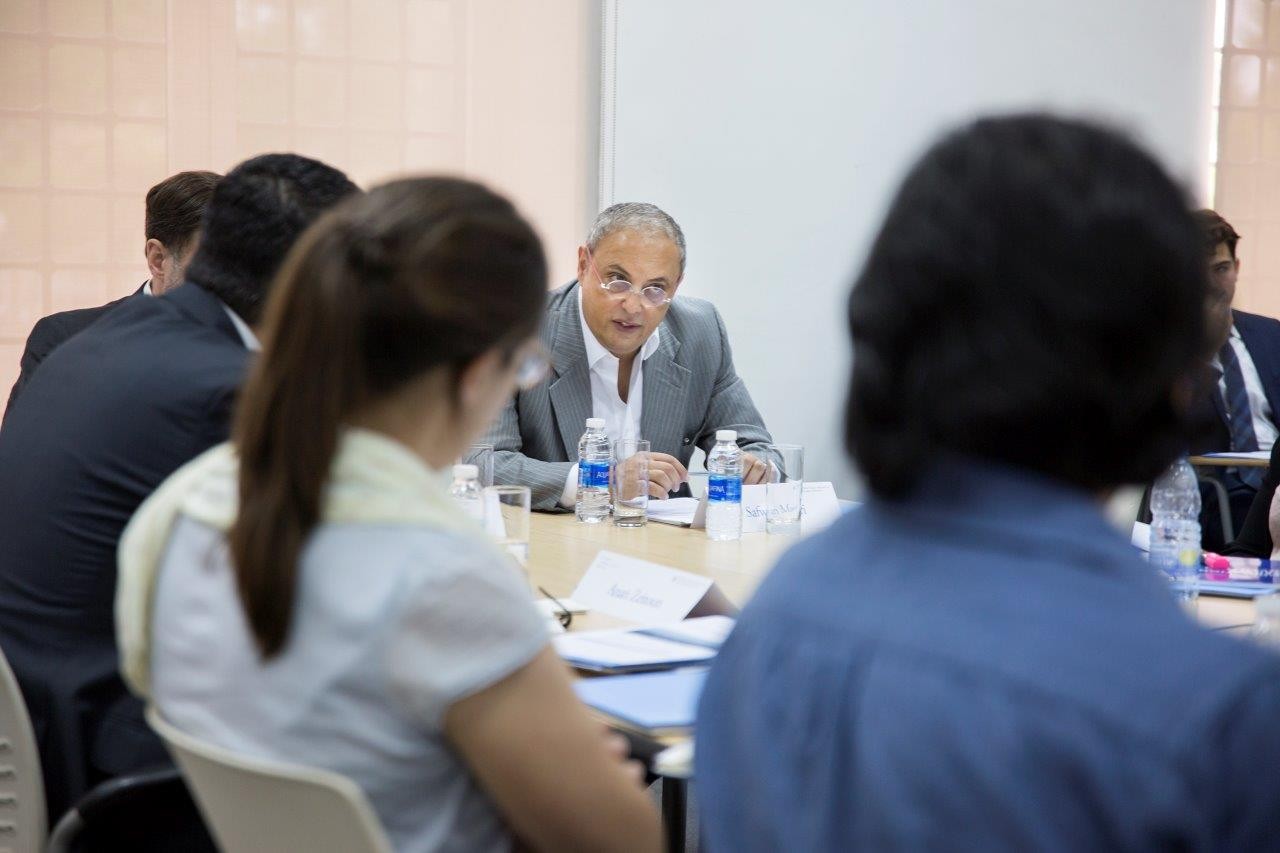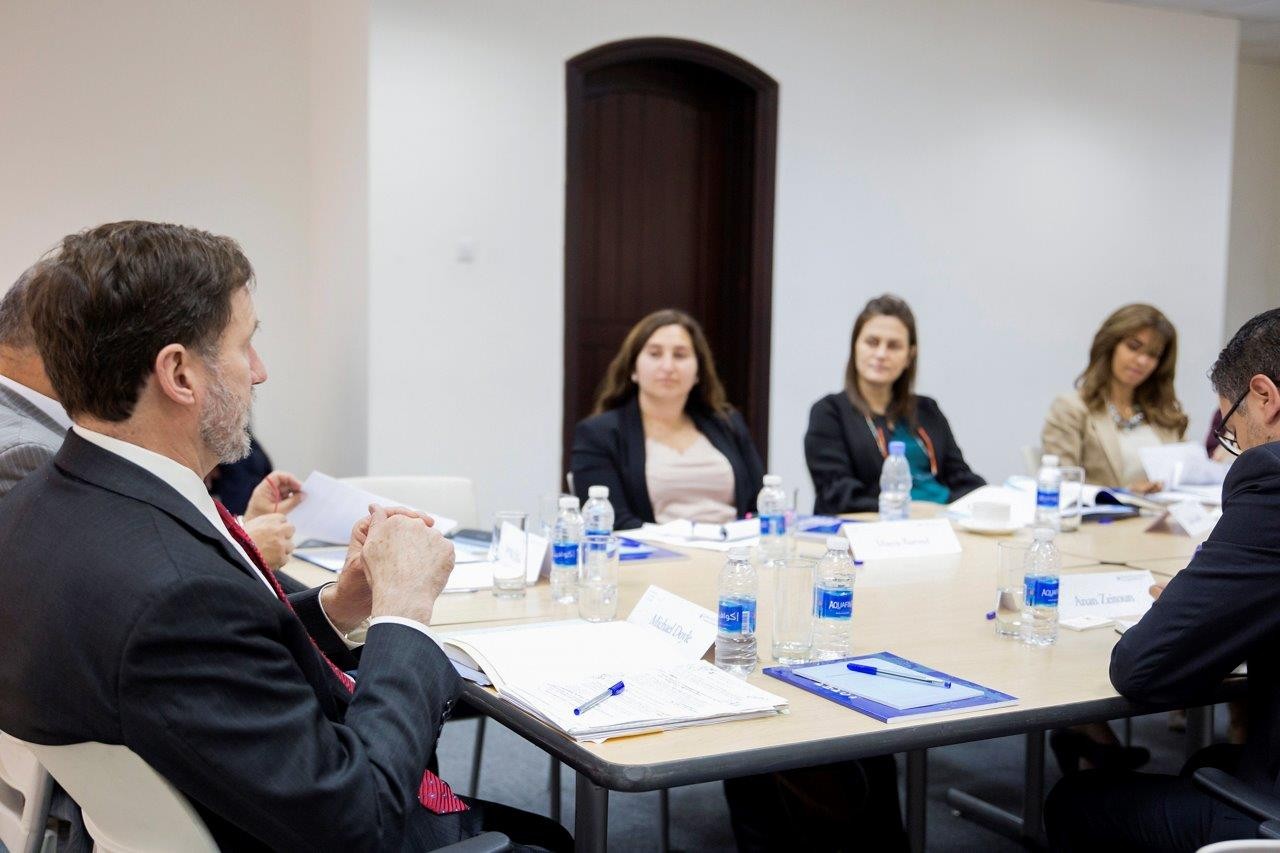The Regional Perspectives on International Mobility: Contextualizing the Model International Mobility Convention workshop took place at Columbia Global Centers | Amman on Sunday, May 6, 2018. The discussion was organized in partnership with Professor Michael W. Doyle, University Professor at Columbia University, Director of the Columbia Global Policy Initiative, and co-author of the Model International Mobility Convention (MIMC).
The workshop brought together MENA policymakers, academics, and practitioners from civil society, nonprofit organizations, and relevant UN entities to critically examine the question of international mobility and theoretically and practically explore the MIMC. The meeting served as a platform for Professor Doyle to present and promote the MIMC, which proposes a framework for mobility with the goals of reaffirming the existing rights afforded to mobile people (and the corresponding rights and responsibilities of states), as well as expanding those basic rights where warranted. Professor Doyle received valuable feedback for the document’s future revision.
Participants addressed the following questions:
- The UN defines a migrant as anyone crossing a border and staying in a different country for at least one year. The MIMC included all types of migrants, including short-term tourists, students, etc. What are the benefits and challenges with this expanded definition?
- What is the attitude of governments and relevant non-profit organizations in MENA toward new legislation on international mobility now and in the next ten years?
- What are the prospects of and challenges to acceptance of the ideas of the MIMC by states and other stakeholders given the current regional political climate?
- What would a framework supporting the MIMC’s implementation at national levels look like and what are the potential legal and policy challenges for such a framework to be developed?
- What is the program of action needed to ease pressure on host countries and ensure the implementation of the global responsibility-sharing envisioned in the MIMC?
- What are the differences and overlaps between the MIMC and the UN-led process of developing the Global Compact on Refugees and Global Compact for Safe, Orderly and Regular Migration?
For more information on the Model International Mobility Convention, visit the website here.

